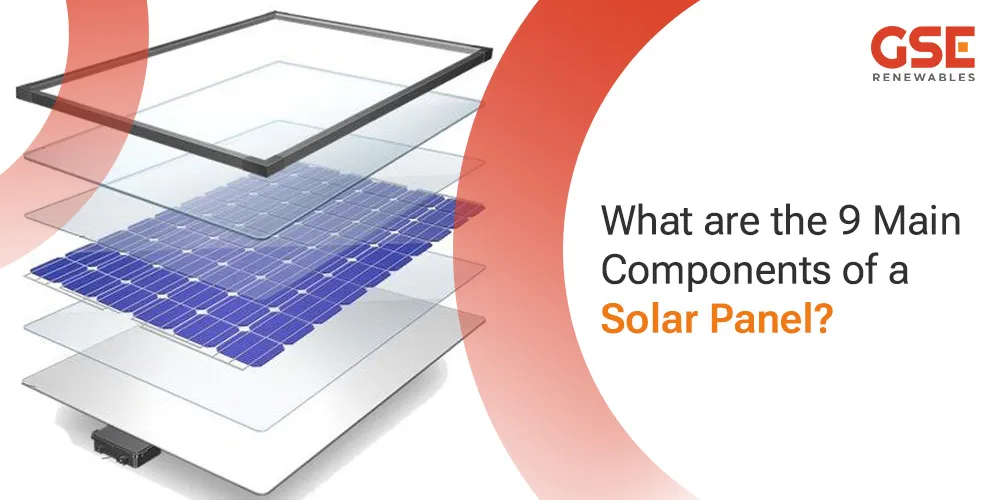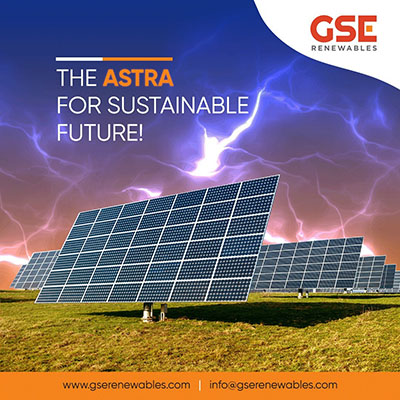Do Solar Panels Work on Rainy Days?
Jul 4

Solar panels known as photovoltaic (PV) panels transform sunlight into electricity through their photovoltaic function. Solar energy systems operate as the most dependable sustainable power solution because they enable climate change mitigation and promote independent energy supply from fossil fuels. The growing worldwide need for renewable power requires a basic understanding of solar panel components alongside their collective operation in renewable energy generation.
Businesses that plan to use solar energy need to understand the fundamental elements of solar panels. All components function together to capture sunlight before converting it into electricity for transmission. Selecting a solar panel system becomes easier when you understand the operational purpose of each component because it enables better decisions about designing and maintaining the system.
Solar power system performance together with lifespan extensions becomes achievable through perfectly installed high-quality solar panel components. The advancement of solar technology brings about better PV panel components which guarantee improved efficiency and reliability.
This guide explains solar panel components and their operational principles and their essential role in developing solar energy into a dependable and efficient power source.
GSE solar panels are designed with high-performance solar panel parts & components for efficient energy generation. Tags of high-end monocrystalline solar cells function in solar panels to bring maximum power conversion rates combined with exceptional longevity. The panels receive protection from robust aluminum frames combined with durable ETFE material which ensures long service life and makes them perfectly suitable for multiple environments.
The solar power generation process becomes simpler because GSE solar panels integrate charging cables with USB outputs into their durable construction. The PV panel components operate in perfect harmony to achieve maximum efficiency and user-friendly operation regardless of industrial or commercial solar panel applications. GSE solar panels assemble effective solar cell technology with resilient components and easy-to-use accessories to become an all-encompassing solution that powers any solar energy system.
A solar PV module is made up of multiple solar panel installation components that work together to convert sunlight into usable electricity. Each part plays a vital role in the system’s overall performance & durability. Below is a detailed solar panel components list explaining each part’s function:
The knowledge of each part in this solar panel parts list enables you to make better choices regarding your solar energy system. Every solar panel component together with its designated function works to enhance energy efficiency and durability while maintaining long-term operational performance.
GSE Renewables Energy demonstrates an efficient system operation through its commercial solar panel setup for those who want to understand the integration of solar panel components. An industrial solar installation operates through several essential solar panel components which we will analyze in detail.
GSE Renewables Energy creates a full commercial and industrial energy solution through the integration of all PV panel components which ensures both efficiency and reliability. The knowledge of solar panel installation components working together enables better business decisions when you invest in solar power.
Read More: Industrial Solar Panels
When installing industrial solar panels, it’s important to use good-quality solar parts & components. Most solar panels come with a 25-year warranty, so checking the quality & understanding how each part works is most important. Buyers should learn about the different parts of a solar panel & what they do. It will help businesses to make smart choices & avoid poor-quality materials.
Silicon functions as the essential material for photovoltaic solar panel production because it exists as the second most prevalent element after oxygen on our planet. Solar panels contain photovoltaic cells which use pristine silicon (Si) as their photosensitive semiconductor material.
Solar panel production utilizes steel and aluminum alongside numerous additional metallic components. Copper functions as an electrical conductor for bus bars and contacts because of its superior electrical properties. Photovoltaic cells require silicon to convert sunlight into electrical energy through their production process.
A photovoltaic (PV) cell functions as a non-mechanical device which converts sunlight directly into electrical energy and also carries the name solar cell. Some PV cells demonstrate the ability to transform artificial light sources into electric power. Solar light consists of photons that function as small solar energy particles.
The main components of a solar panel include photovoltaic (PV) cells together with a glass cover and encapsulants and a backsheet and an aluminum frame and a junction box.
A solar PV system consists of PV modules (panels) together with a charge controller and inverter and battery bank (storage) and appliances (loads). The system has the capability to link with the power grid. The PV panels generate direct current power that either gets stored in batteries or gets converted to alternating current for use.
Electrical systems turn sunlight into direct current electricity through their PV cells in solar panel modules. The DC power passes through an inverter to transform it into alternating current (AC) for powering factories and transmission to the grid.
A typical solar panel has six main layers:

Our Blogs With a combined experience of over 250 years and the successful management of 30 MW of solar energy projects, GSER offers the most efficient solutions. Do Solar Panels Work on Rainy Days? Solar energy is becoming an essential part of the modern energy...
Read MoreThe worldwide move to sustainable energy it is not just a trend its now adopting speed and RE100 (Renewable Energy 100%) ) is right at the heart of this corporate climate action.
Read MoreThe worldwide move to sustainable energy it is not just a trend its now adopting speed and RE100 (Renewable Energy 100%) ) is right at the heart of this corporate climate action.
Read More